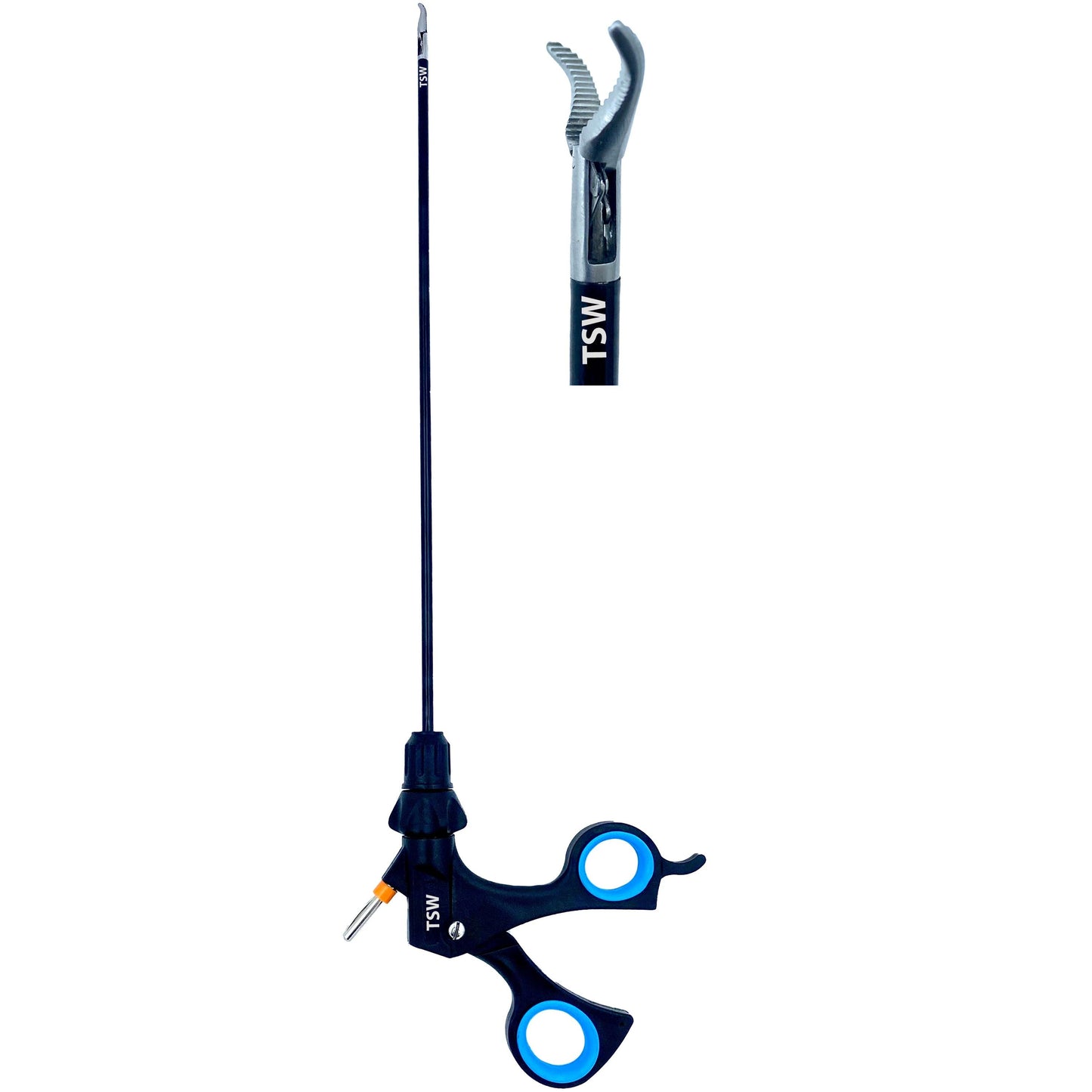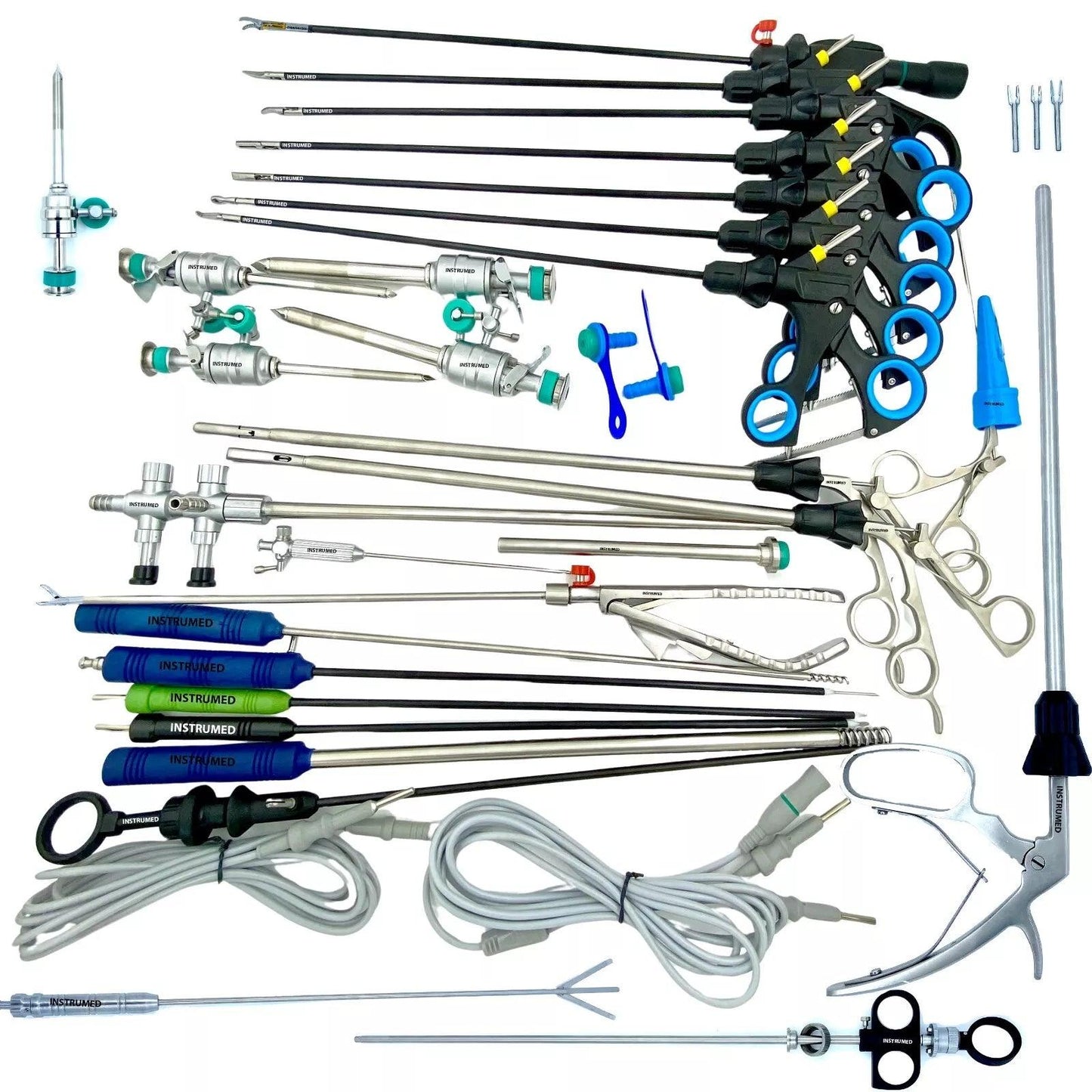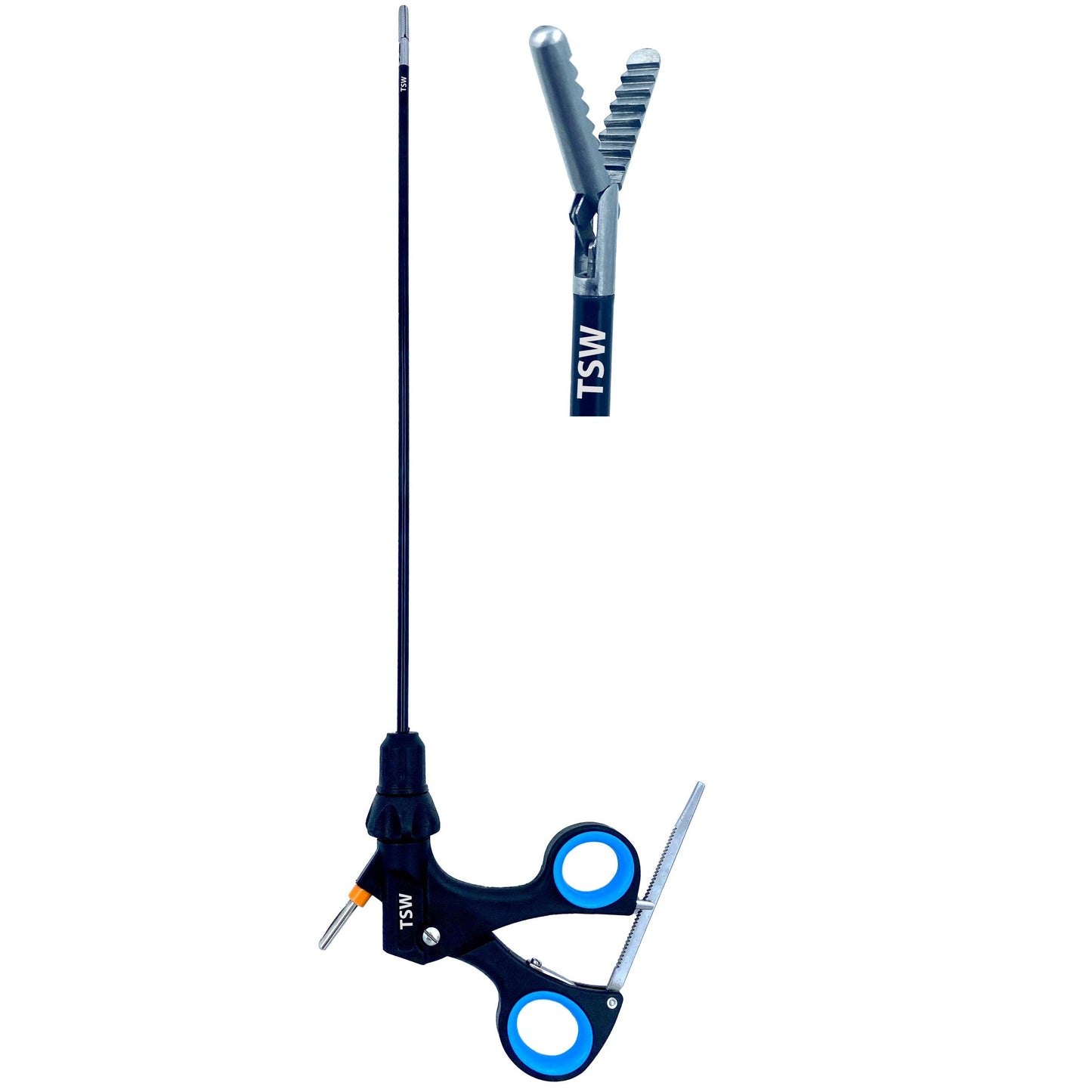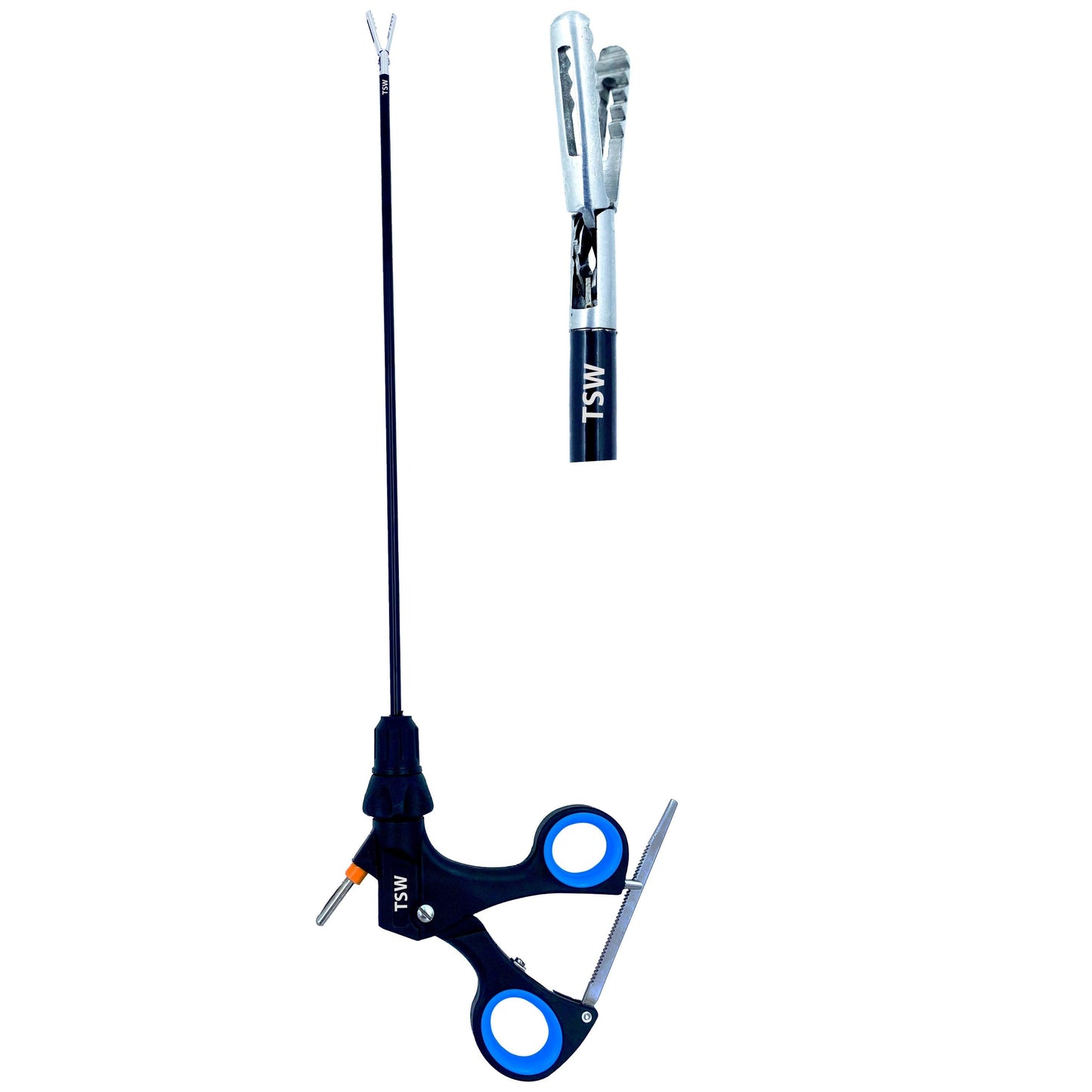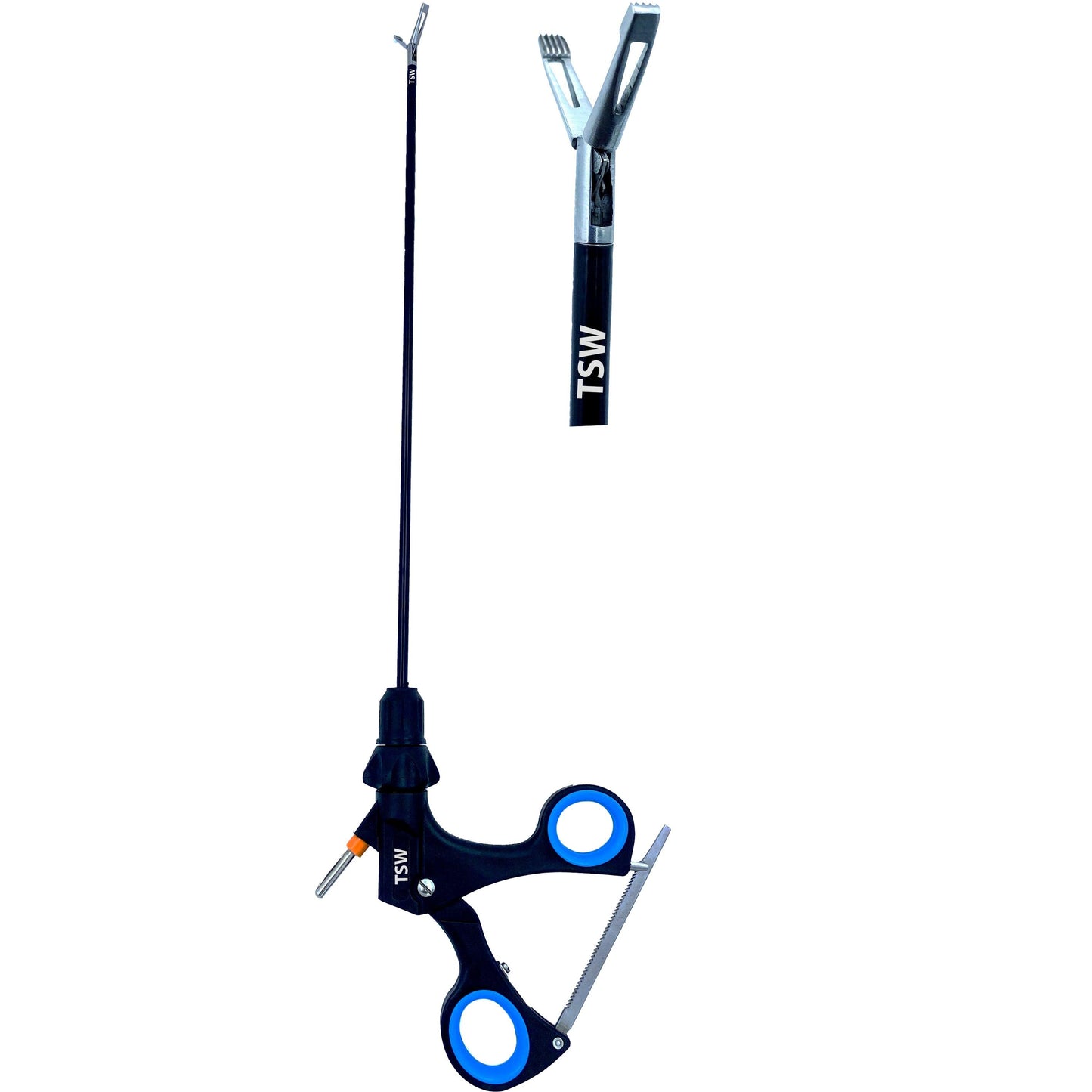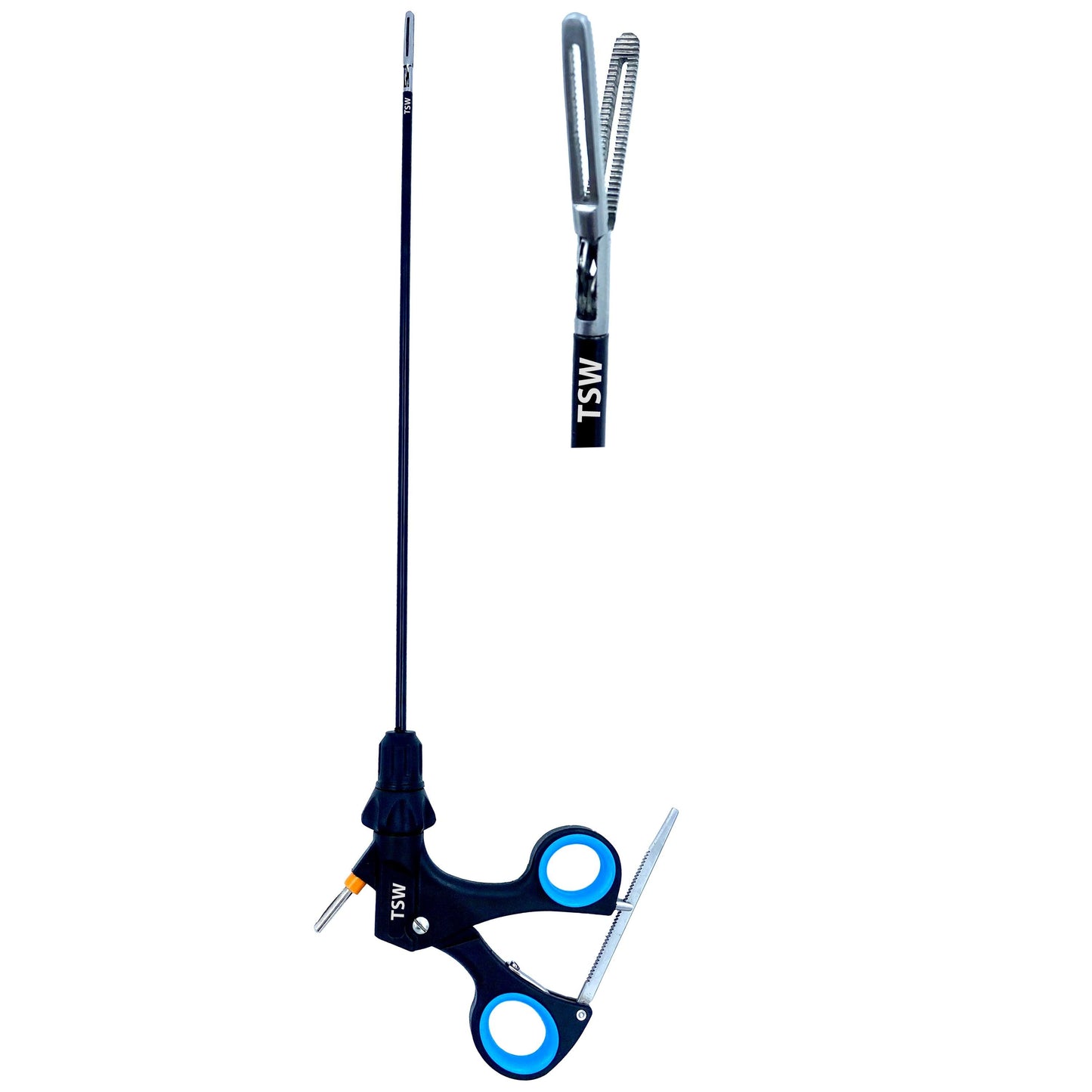1
/
of
2
My Store
Laparoscopic Grasper
Laparoscopic Grasper
Regular price
Rs. 1,749.00
Regular price
Sale price
Rs. 1,749.00
Unit price
/
per
Taxes included.
Shipping calculated at checkout.
Couldn't load pickup availability
Share
A laparoscopic grasper is a specialized surgical instrument used in minimally invasive (laparoscopic) surgery. It is designed to grasp, hold, or manipulate tissues or organs during surgery through small incisions. Here’s a detailed description:
Features of a Laparoscopic Grasper:
- Design: The grasper typically has long, slender, and rigid handles with a working end that features jaws or tips. These jaws can be straight or curved, depending on the surgical needs.
- Material: Made from high-quality stainless steel or titanium for durability and strength. Some models are coated with a non-stick material to prevent tissue from adhering.
- Operation: The grasper operates through a set of long handles connected to a set of jaws at the distal end, which the surgeon controls. The handles are often designed with ergonomic grips to improve comfort and precision.
- Size: The instrument is long (usually between 30 cm to 45 cm) to allow the surgeon to reach areas deep within the abdomen or other body cavities through small incisions.
-
Uses: Laparoscopic graspers are commonly used for tasks such as:
- Grasping tissues, organs, or sutures.
- Holding structures in place during dissection or suturing.
- Retrieving objects or samples from the body.
- Assisting with tissue retraction or manipulation during various laparoscopic procedures, including cholecystectomy (gallbladder removal), appendectomy, and hernia repairs.
-
Types:
- Curved or straight graspers: Depending on the angle needed for certain procedures.
- ** atraumatic graspers**: Designed to gently hold tissues without causing damage.
- Suturing graspers: Specifically designed to assist with suturing during laparoscopic surgeries.
Functionality:
- The grasper is used to manipulate tissue with precision, while minimizing trauma to surrounding tissues, which is particularly important in minimally invasive procedures.
- The tool is typically introduced through small incisions with the help of a laparoscope (camera) to guide the surgeon.
Advantages:
- Minimally invasive: Reduces the need for large incisions, leading to faster recovery times, less scarring, and reduced risk of infection.
- Precision and control: Helps in precise handling of delicate tissues or organs.
Laparoscopic graspers are essential for the success of many modern surgical procedures, offering a combination of safety, efficiency, and minimally invasive technology.
 ISO Certified
ISO Certified
 CE Certified
CE Certified
 FDA Approved
FDA Approved
